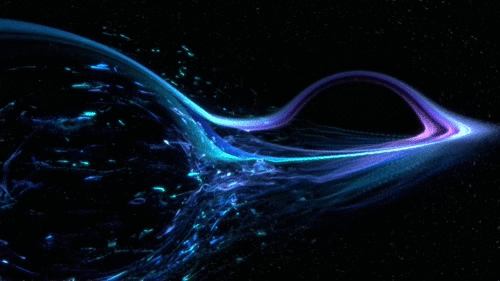Astronomers have spotted what could be the lowest-mass black hole ever found.
When the largest stars in the Universe die, they explode into a supernova. After this explosive event, they can take one of two routes. Smaller supernovae leave behind neutron stars, which are so dense that they are typically only around 20 km across. Larger supernovae collapse into black holes.
The problem that has bothered astronomers about this process is that there appears to be a ‘mass gap’ between neutron stars and black holes. That is, the heaviest neutrons stars weigh only 2.5 times the mass of our Sun, whereas the lightest black holes weigh 5 solar masses. Does anything lie in this gap?
Read more about gravitational waves:
- From apples to gravitational waves: a brief history of gravity
- Can gravitational waves teach us about the inside of a black hole?
It turns out that the answer is yes. On 14 August 2019, scientists at the Laser Interferometer Gravitational-wave Observatory (LIGO) and the Virgo interferometer detected a collision between two objects, one weighing 23 solar masses, and the other weighing 2.6.
As these two objects merged, in an event named GW190814, they threw out a blast of gravitational waves which stretched and compressed spacetime across 800 million light-years until they reached Earth.
At 2.6 solar masses, the smaller of the two objects falls neatly into the mass gap. “Discoveries such as this are puzzles, and force us to scratch our heads a bit,” says David Reitze, executive director of the LIGO Laboratory. “Have we observed the most massive neutron star or the lightest mass black hole?”

When LIGO and Virgo spotted GW190814, they immediately informed the astronomical community, who turned space- and ground-based telescopes to the same spot in the sky. However, none of these telescopes spotted any light coming from the collision: it seemed to be only gravitational waves given off.
There are a few possible explanations for this.
First of all, it could simply be that the merger took place too far away for light signals to be easily observed. In 2017, LIGO and Virgo spotted a merger between two neutron stars, known as GW170817. NASA’s Fermi telescope observed the associated gamma ray burst, making GW170817 the first astronomical event to have been observed in both gravitational waves and light. However, the collision in 2019 took place six times further away than GW170817.
Read more about black holes:
- Researchers verify ‘extremely odd’ black hole physics
- Black hole discovered just 1,000 light years from Earth
Alternatively, the smaller object could be a neutron star – though it would have to be bigger than the current theory of neutron star formation would allow. If so, Prof Vicky Kalogera, co-author of the paper, thinks that it’s possible that the neutron star was swallowed whole without being torn apart, since the other object in the collision was so much larger.
"I think of Pac-Man eating a little dot," says Kalogera. "When the masses are highly asymmetric, the smaller neutron star can be eaten in one bite." The result would be a collision that gives off no light at all, only gravitational waves.
Or, if it was a collision between two black holes, this also would most likely not have given off any light. This would make the 2.5 solar mass object the lightest black hole ever discovered.
Whatever the cause, Pedro Marronetti, program director for gravitational physics at the NSF, believes it is a ‘novel insight’. “The mass gap has been an interesting puzzle for decades, and now we've detected an object that fits just inside it,” he says. “That cannot be explained without defying our understanding of extremely dense matter or what we know about the evolution of stars.”
Reader Q&A: What would happen if a very strong gravitational wave passed through us?
Asked by: Thomas S Marcotte, USA
Gravitational waves spread out from any violent event involving matter – such as, say, the collision of two black holes. Like gravity, however, they're incredibly weak, so you'd have to be extremely close to their source in order to feel their effects.
It would definitely feel weird, as they'd create a rhythmic stretching and squashing sensation on the body. But you'd have to be so close to the cataclysm itself that you'd never live to describe it.
Read more: